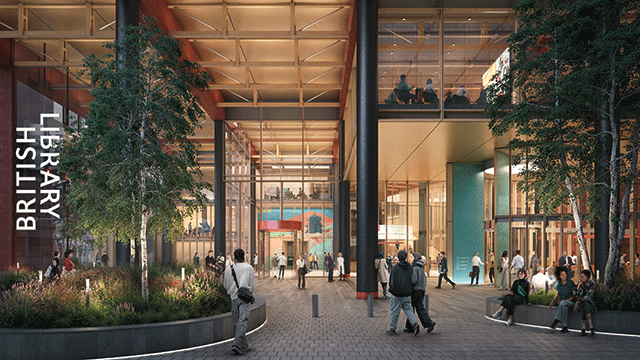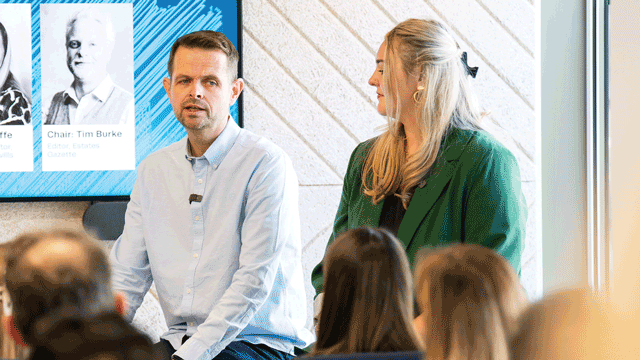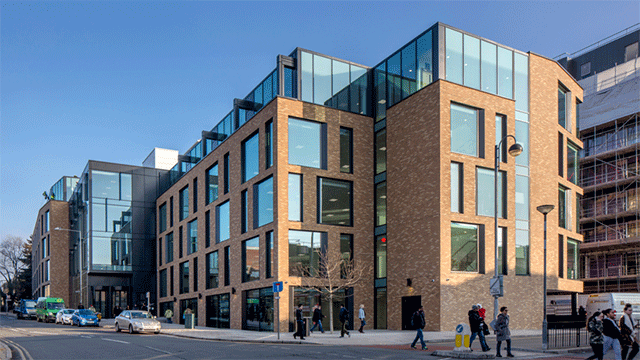Mitsui Fudosan’s £1.1bn project to revamp and extend the British Library in London marks one of the largest direct real estate investments made in the UK by a Japanese company.
The project, led by Mitsui Fudosan with Stanhope as development manager and Savills advising, includes new commercial space pitched to life sciences operators as well as public access on land owned by the library to the north of the existing building.
For Takeshi Iwama, chief executive of Mitsui Fudosan UK for a year and a near-three-decade veteran of the group, the project is a landmark development, not only in terms of its UK portfolio but globally too.
The project’s story started in 2015, when the British Library opened bids for an extension to the building. Mitsui and Stanhope teamed up on a pitch and their joint venture won the work in 2017 with a development agreement signed two years later.
The deal has put the company right in the heart of one of London’s fast-expanding science and technology hubs.
“For us, what was appealing was that the location was right in the centre of the Knowledge Quarter and also right next to the Francis Crick Institute – and the British Library itself is one of the most important cultural institutes in the United Kingdom,” Iwama told Estates Gazette in an interview at the company’s London offices, conducted via an interpreter.
“We have experience in multiple numbers of projects for neighbourhood creation and also development projects. The vision that we have is that through this neighbourhood creation project, we are trying to revitalise the region and the industry and support innovation throughout. That means to promote both the social value and economic value.”
The latter point is crucial for Iwama and colleagues. “We are contributing to the public space and the agreement that we have with Camden Council is that we are going to contribute to the revitalisation of the region and the community itself,” he said. “Also, we can contribute to the development of the Knowledge Quarter. And that means we will be able to get closer to our goal of achieving economic value as well as social value. We will be able to provide both simultaneously. It is a very rare opportunity.”
Making life sciences tick
Mitsui Fudosan has form when it comes to developing life sciences real estate. It has been doing so in its home market of Japan for a decade now and has 18 projects. It has also been operating in the US since 2017, and today has projects in Boston, San Diego and the San Francisco Bay Area.
“The lesson learnt, especially from these clusters in the US, is that when you form a cluster, there will be academia – a university strong in the life sciences domain – the funds from venture capitalists that will be provided to that cluster, and government support in terms of grants and preferential treatment on tax as well as accelerated approval processes,” Iwama said. “It creates a hub where multiple players will be able to communicate. There will be an ecosystem created.”
The Japanese market needed more work, he added. There, there is “top-notch academia and funds coming from the venture capitalists”, along with a smaller degree of government backing. “But then what is lacking in Japan,” he added, “is the ecosystem or the hub”.
Mitsui Fudosan set out to create that hub itself. The Nihonbashi area of Tokyo, where the company has its headquarters, was historically home to many pharmaceutical companies, and it was there that the company established its Link-J – or Life Science Innovation Network Japan – initiative.
“There are 900 members at this point, from academia, life sciences and pharmaceutical companies, to start-ups and also individuals in the medical field,” Iwama said. “There are 800 to 900 events carried out each year where parties will be able to communicate and we support this activity. It is now considered to be the top cluster within Japan. And so we have created that ecosystem and we take pride in the fact that we have become the first mover in the life sciences movement in Japan.”
Lessons from the US and Japan are now being brought to bear on the company’s UK work.
“What we can say about our learnings is that life sciences as one single project is not going to make things tick,” Iwama said. “You need an ecosystem. When you look at the Knowledge Quarter, there are the academia, the world-renowned Francis Crick Institute and also pharmaceutical companies, meaning all the elements required for the life sciences cluster and ecosystem exists.”
Upside potential
Iwama and his team see huge potential in the UK life sciences sector. “Look at the pharma companies here, and also the service businesses related to pharma,” the chief executive said. “It’s quite large and there is further growth that can be expected in this area. But compared with the scale of the market, the stock volume is quite small, and that means there’s still a lot of upside.”
The company is keen to expand its life sciences portfolio in the UK, but Iwama said it will be “very selective” and remains focused on the Golden Triangle cities of London, Oxford and Cambridge.
But there are other sectors in the team’s collective sights. Offices are still in focus, although only in central London, the chief executive said. Last year, a JV was agreed with Panattoni to invest in a logistics project in Coventry, while it is also making a mark in the residential sector through projects such as its Television Centre redevelopment, also alongside Stanhope.
“We believe there’s potential there,” Iwama said. “In the past we’ve been very much focused on offices, but we want to diversify our portfolio going forward.”
Volatility in other markets – especially that caused by US policy coming from the Trump administration – could make the UK a more attractive prospect for dealmakers. “There’s liquidity, there’s transparency compared with any other market. It is one of the greatest markets for real estate,” Iwama said. “Looking at the current situation compared with other countries, I think the UK is still in a very good position. The London market for us is going to continuously be a favourable area for investment.”
And choppy markets mean further pricing corrections that can open new opportunities too.
“If we were to sell a property, that timing is going to be pushed back,” Iwama said. “But on the other hand, in terms of the acquisition timing, we will be able to get a nice return on the properties that we acquire and that period is going to be prolonged as a result.
“We can’t be certain of what is going to happen in the future but we don’t want to do nothing – we would always be tenaciously looking at whether there will be an acquisition opportunity.”
Talking locally
There’s heavy lifting ahead back at the British Library. Operations on site are expected to start next year with what David Height, Mitsui Fudosan UK’s managing director for design and engineering, called a “fairly protracted” set of enabling works.
That work needs to be done in such a way as to ensure the entire library can function as normal during the project, which will also support the eventual creation of a new Crossrail 2 underground station. The five-year build should complete in 2031-2032.
“The library has a lot of back-of-house operations, and it has an extremely important national function, to preserve the collections and to move parts of the collections in and out for exhibitions and so on,” said Height. “So all those very critical functions have to be kept running and kept secure even though we’re building this large development. The Crick next door has very sensitive scientific experiments going on. So the construction process has to be very carefully managed to avoid excessive vibration, electromagnetic interference and other things. It’s quite a quite a delicate piece of work.”
With the Covid-19 pandemic having dragged out dealmaking itself, the Mitsui team said it found a silver lining in being able to consult more fully and for longer with local residents and businesses.
The key, Height said, is never to lose sight of social value and how a cluster can “benefit the local community in real terms”.
“There are a lot of youth groups, a lot of educational groups, a lot of different ethnic communities represented, whose identification with the library is very interesting,” he said.
“They have different views of what it is and whether it’s for them or not. This project, from the library’s point of view and ours, is a way of opening up the library to that community in a new way.”
Images © Tyson Sadlo; Secchi Smith/RSHP
Send feedback to Tim Burke
Follow Estates Gazette












